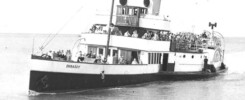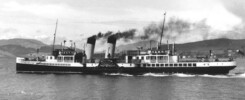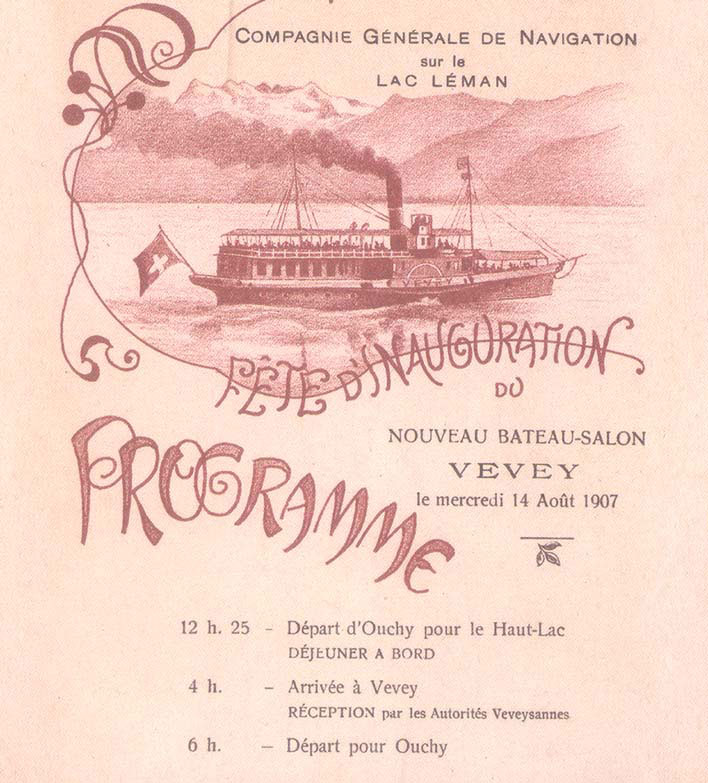
This November has seen the return to service on Lake Geneva of the Paddle Steamer Vevey after a major re-build. Dating from a boom period for Swiss paddle steamers in the Belle Epoque period before the First World War, the Vevey made her inaugural trip from Lausanne Ouchy on 14th August 1907. At 58m in length she had an initial passenger capacity of 1,000, was a slightly smaller version of the General Dufour of 1905 and would be the template for a sister, Italie, in 1908.
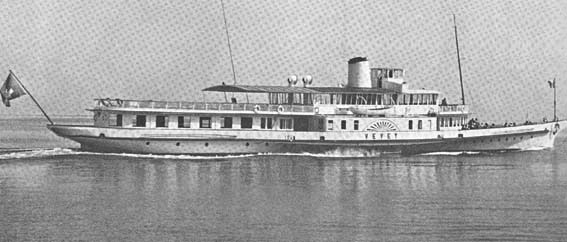
In 1952 the CGN, her owners, commissioned an analysis of the costs of running their fleet and, as a result, decided to remove the Vevey’s steam engine and replace it with Diesel-electric propulsion. She returned to service with her new motors and a new funnel in 1955.
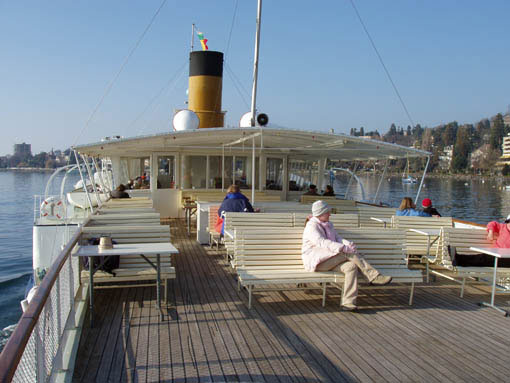
With the increase in interest in paddle steamers in the 1980s, whilst retaining her Diesel-electric machinery, Vevey was given a more traditional paddle steamer funnel to make her look more the part. She continued to be a useful member of the fleet often operating throughout the year and filling in, as required, on the Lausanne – Evian commuter ferry service.
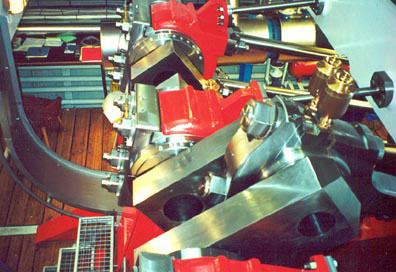
Interest in paddle steamers had reached such a pitch by the late 1990s that a plan was hatched to reconvert the four, of the eight Lake Geneva paddlers which had been previously been converted to Diesel-electric, back to steam. First to receive this treatment was the Montreux which emerged in her rebuilt state in 2001 complete with a brand new diagonal reciprocating paddle steamer engine (pictured above), the first to be built like that anywhere since the 1950s. It was bridge controlled and was a triumph. But it was a pricey triumph. A very pricey triumph in fact. And the cost of the new engine made the CGN think again about how they were going to rebuild the other Diesel electric paddlers and whether or not the cost of new purpose built steam engines was just too great.
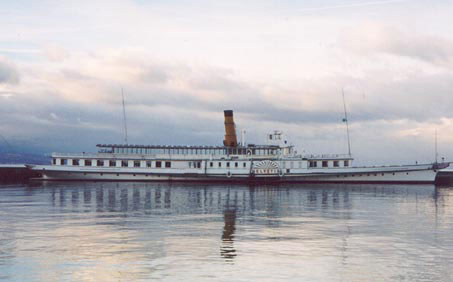
As a result, as the first decade of the new century wore on, each of the remaining Diesel-electric paddlers, the Helvetie (pictured above), Italie and Vevey were withdrawn and laid up at Ouchy, with no certain plans for their rebuilds.
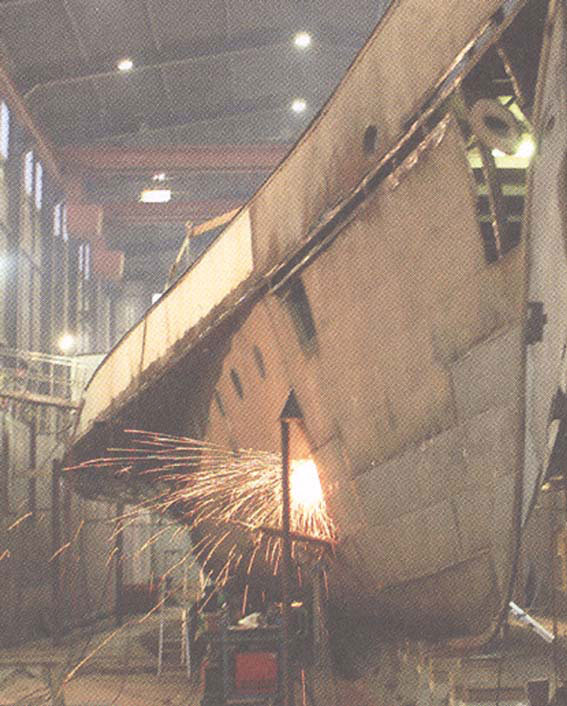
Then, in 2012, hurrah! Work started to rebuild the Vevey. She was taken into the undercover shipyard at Ouchy, stripped back to nothing, re-plated as necessary and gradually built up again.
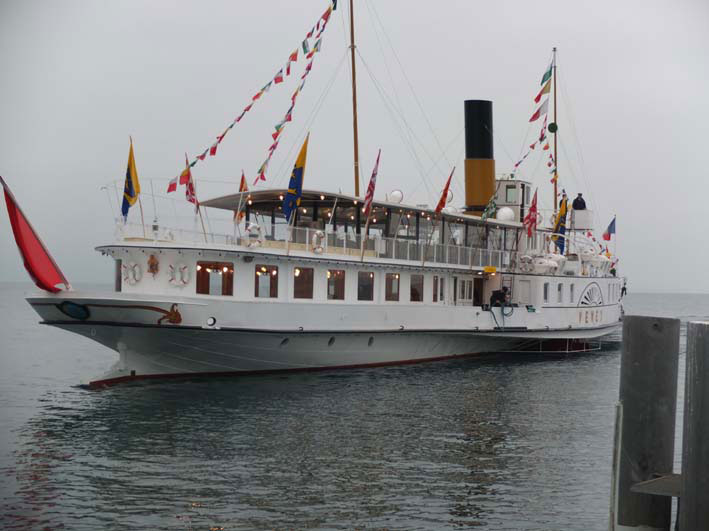
Towards the end of this summer, as work was nearing completion, she ran trials on the lake and returned to passenger carrying service with special trips from her namesake town of Vevey on Saturday 16th November and from Lausanne and Geneva on the following day. Here she is backing up to the landing stage at Lausanne Ouchy to load for the single voyage to Geneva at about 9.15am on Sunday 17th November.
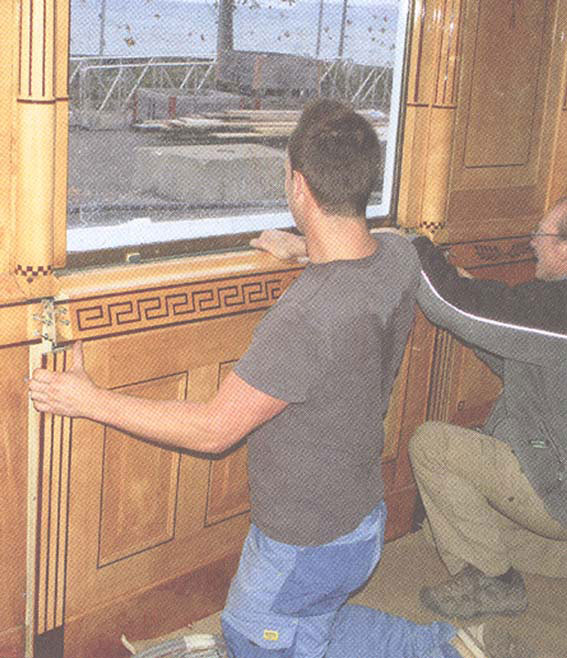
The wonderful, original, inlaid saloon panelling was removed before the Vevey was re-built and can be seen here being put back in place.
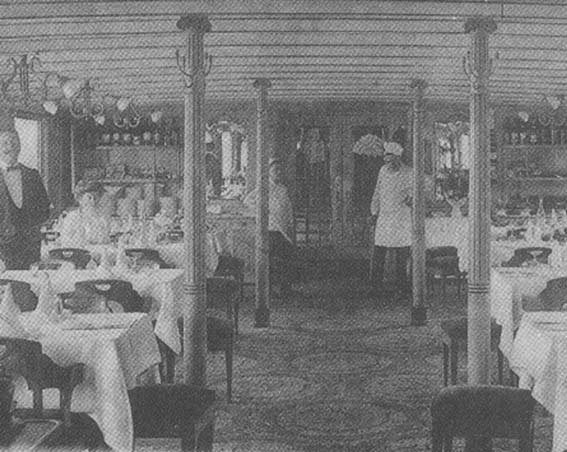
This is the saloon in 1907 and…
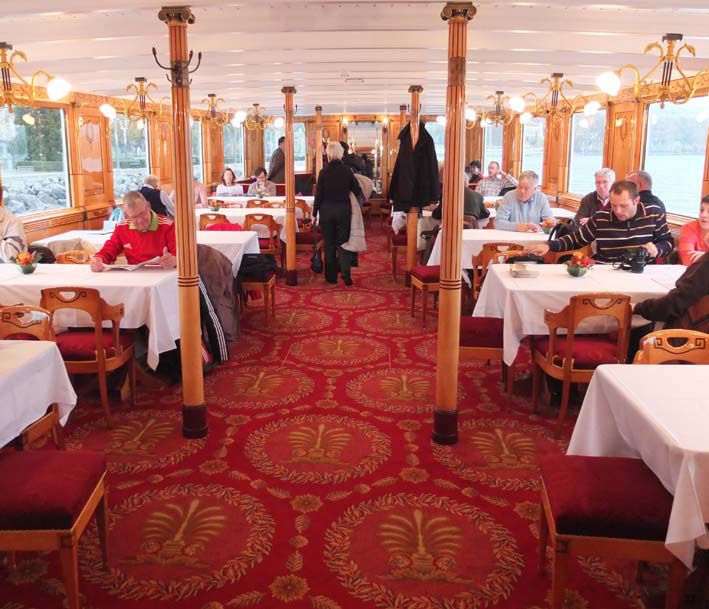
…today. The people are wearing different styles of clothes but the saloon is the same.
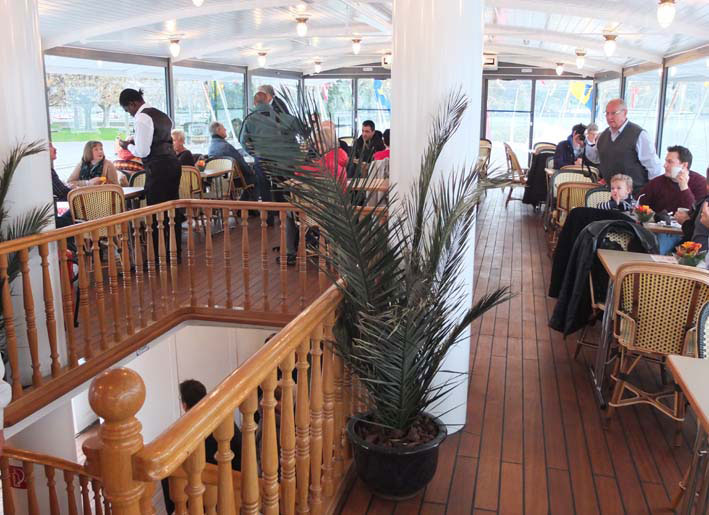
On deck there is covered accommodation, which was not there in 1907, providing extra seating both for getting uninterrupted views of the lake and mountains when the weather is not so good and for eating and drinking. Although the structure is modern it is mostly made of plate glass so sort of merges into the background making its existence less obvious in the ship’s profile.
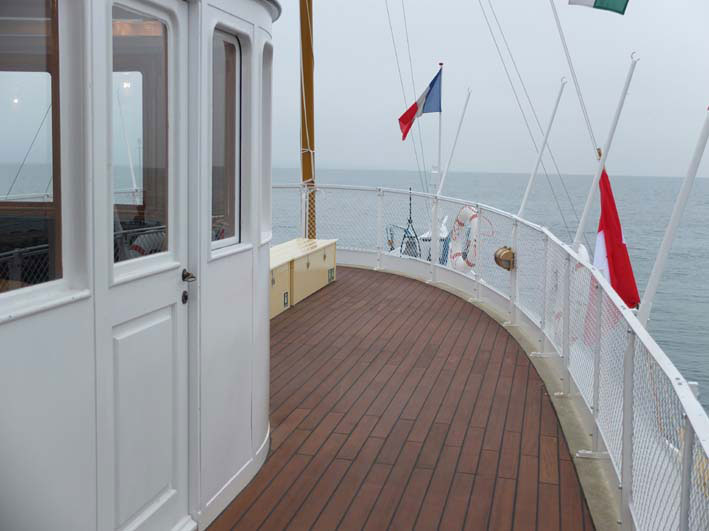
It is definitely an improvement on the previous on-deck shed and also has been accompanied by the re-institution of the delightful little cabin or stubli (left)…
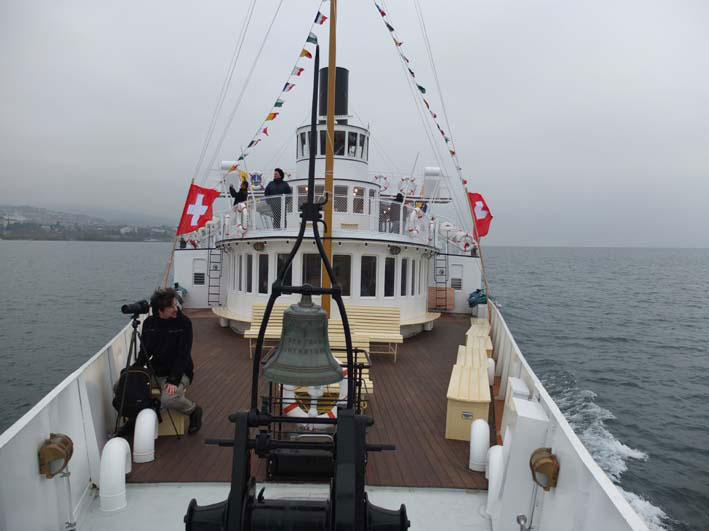
…at the forward end.
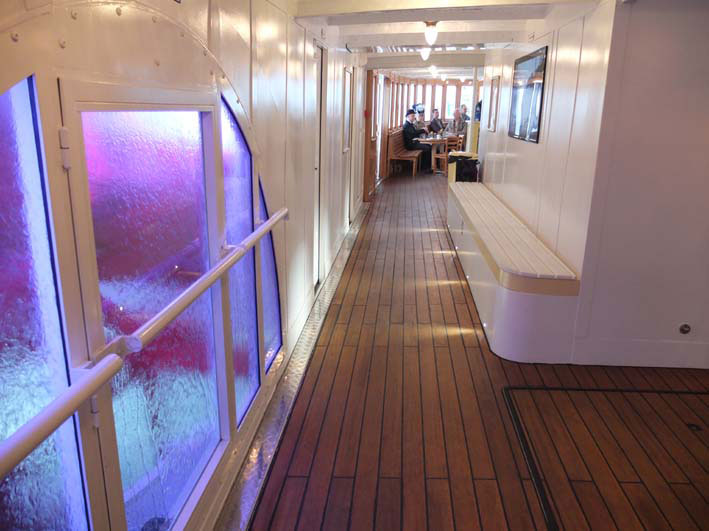
A view looking forward on the port side with the paddle wheel on the left and the engine casing on the right.
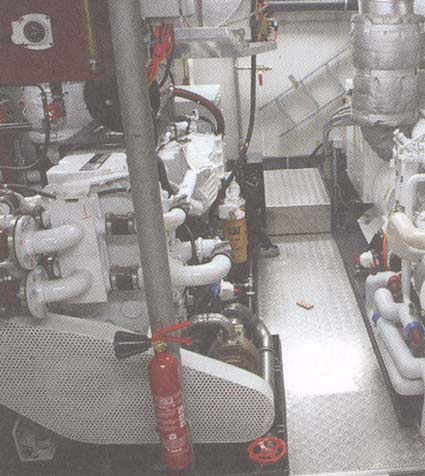
For die-hard purists who love steam there may be a little sadness in that that the Vevey has been rebuilt with new Diesel-electric propulsion (pictured above). But for me, I would rather have a paddle steamer going than one which is laid up or scrapped. And there is little doubt that, if you don’t already have a steam engine, Diesel electric machinery is cheaper to buy, cheaper to install and, as in this case with an unmanned engine-room, cheaper to operate than steam.
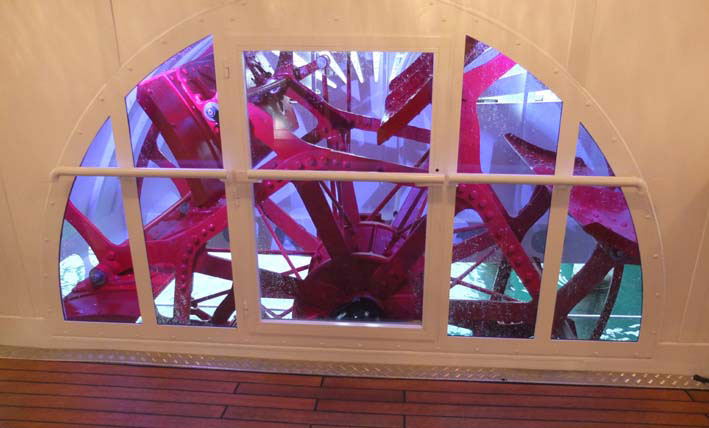
And there is compensation for this in other areas. The toughened glass inboard casing of the paddle boxes gives a much improved view of the wheels and leaves none of the passengers in any doubt about how this ship is propelled.
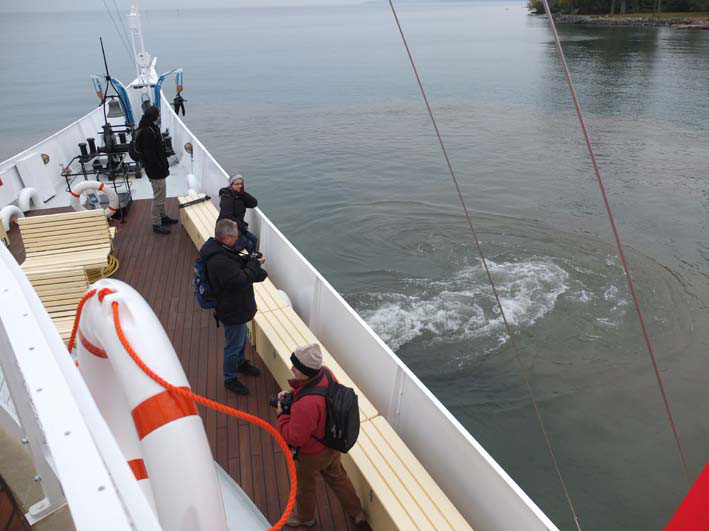
Vevey has been given a bow thruster. OK, I am in favour of and love traditional paddle steamer handling techniques of which the Swiss are absolute masters. But there can be no doubt that a bow thruster can be of aid to a paddle steamer in an awkward corner or if things are not going according to plan. In their heyday paddle steamers were given bow rudders where they were needed, for example at Portsmouth and on the Thames. And, if bow thrusters had been invented, doubtless owners would have fitted them as well where necessary. After all, if an owner wishes to protect his/her ship from damage and difficulties, he needs to make it as easy to handle as possible for his/her captains so that they are not absolutely dependent on the vagaries and availability of particular and highly specialised skills.
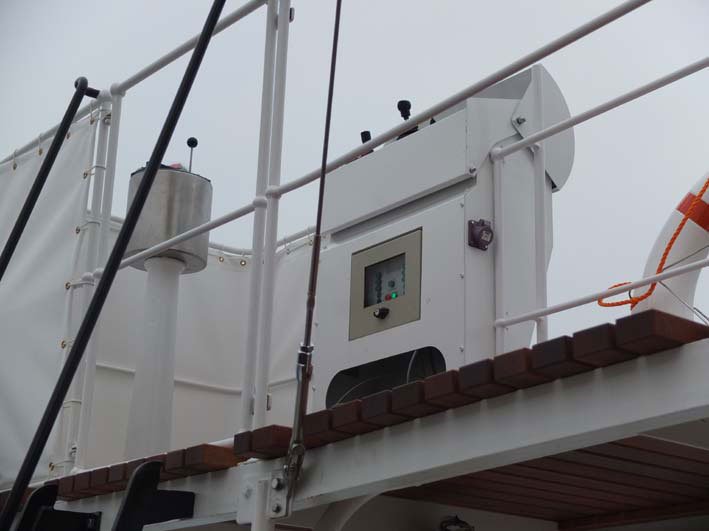
All of this machinery is controlled by just one man on the bridge. The three sticks you can see are for controlling the engine, (remember the engine-room is unmanned), the bow thrust and the electric steering.
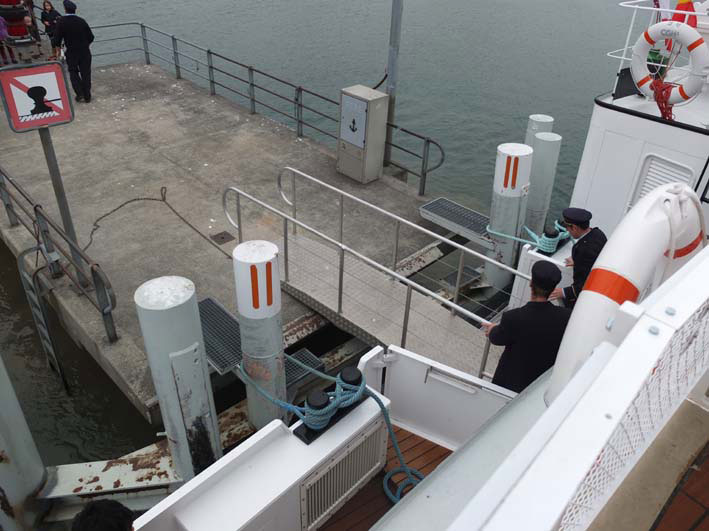
All of this helps to cut operating costs. If you want to run a successful business you have to make sure that costs are kept well under control. If you don’t and costs exceed income then you go bust. Plain and simple. And then you haven’t got a business. You haven’t got a boat. And the boat which you did have is on the way to the scrap-yard.
One key area here is crewing and the Swiss woke up early to keeping this under control. They have been imaginative and persistent in making sure that their paddle steamers are cost effective to run. As built, in 1907, the Vevey needed a core operating crew of ten. Today, for the same ship, the same size, it is just four. You can see three of them in this picture having tied up the Vevey alongside the pier with just two ropes, one either side of the gangway. Two crew members are standing by the gangway. The third is on the pier opening the chain to let the passengers through. The captain is on the bridge. Apart from the catering staff serving the drinks and the dinners, that’s it.
In fairness, one sacrifice here is in passenger capacity as you do need extra crew for larger numbers of passengers for the safe evacuation of a ship in the unlikely event of an emergency. When built the Vevey could carry 1,000. Today it is around 500. But how often do you need the capacity to carry more than 500? And is it worth the expense of fitting the extra life-saving kit and employing the extra crew for such numbers when you hardly ever carry them? And on the rare occasions you do, what is the experience of those passengers? In this day and age the last thing you want is people going ashore after a trip and telling everyone on Twitter, Facebook and Trip Advisor what an unpleasant cruise they have had because the ship has been “soooo crowded” that they couldn’t get a seat and had to stand up in the rain. And decreasing passenger numbers thereby increasing passenger comfort has been a general trend amongst passenger boat operators in recent years.
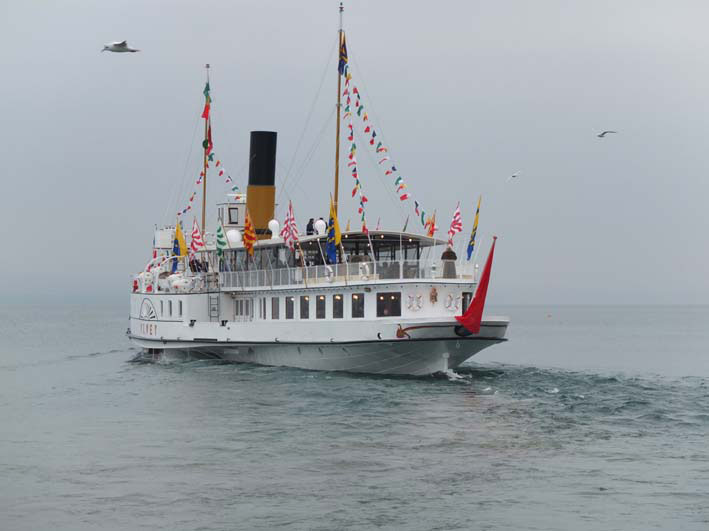
For me, sailing aboard the newly rebuilt Vevey on her first trips on the lake in mid November was a real pleasure. I have the very greatest admiration for the Swiss and for what they have done and continue to do to keep paddle steamers sailing. They have this wonderful ability to to re-invent the old, making their paddle steamers suitable for today’s market whilst also making sure that they are cost effective to run by combining old traditions with modern technology.
The proof of this is all in the pudding. In Switzerland, a land locked country with no direct access to the sea, there are sixteen beautifully restored paddle steamers of some size operating on six different lakes. Fifteen of them are powered by steam and another, the Neuchatel, is set to re-enter service next year fully restored with a steam engine which has been lying in a store for many years after being taken out of the Chiemsee paddle steamer Ludwig Fessler way back in 1972. In the UK, surrounded by water and with seafaring in our blood, we have just two and there is currently no realistic prospect of any more going into service in the near future.
Well done Switzerland I say.
Kingswear Castle returned to service in 2023 after the first part of a major rebuild which is designed to set her up for the next 25 years running on the River Dart. The Paddle Steamer Kingswear Castle Trust is now fund raising for the second phase of the rebuild. You can read more about the rebuilds and how you can help if you can here.
John Megoran

